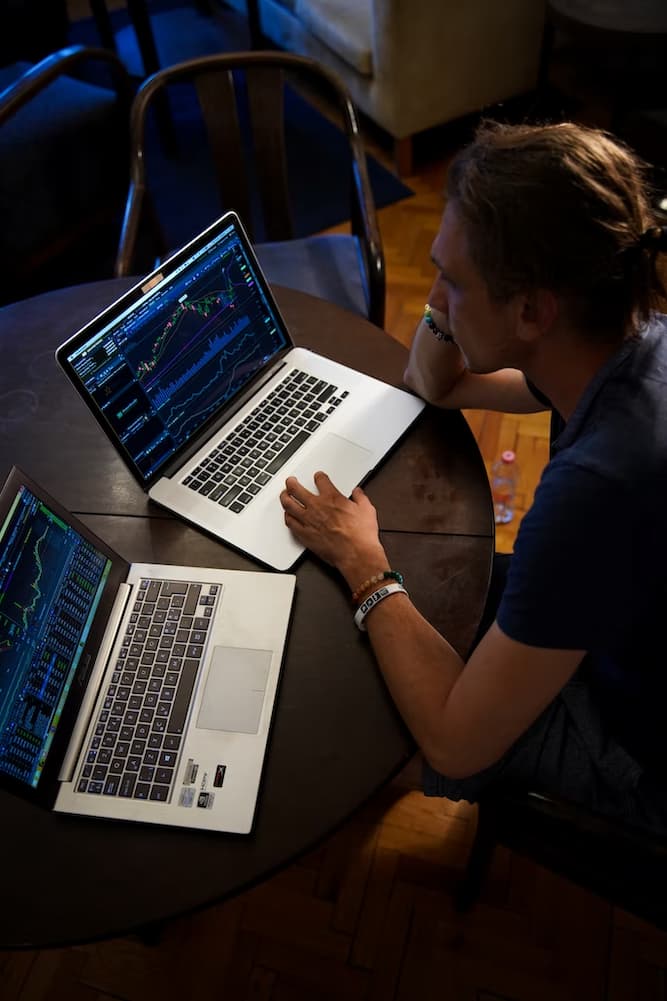When people began to exchange goods, the first market appeared. The first profit appeared when they started making a margin, with it the first financial market. The modern financial market is a very lively organism that develops following its inherent trends. In the course of development, new features must be considered by each market participant. This applies to everyone but most beginners.
In this article, we will consider the most obvious features of the market, which have appeared due to the development of information and many other technologies. The same Internet has long become an indispensable tool for representatives of the business. Without them, it is now impossible to imagine the existence of financial markets. That is why we will start with computerization.
Pervasive Computerization
The functionality of trading platforms, banks, and large financial corporations is provided today by all communication channels – from satellite to fiber optics. The work uses huge capacities of various servers, remote terminals, multi-level networks, etc. From a business point of view, these developments provide market participants with limitless opportunities. But most importantly, transactions in the financial space have become faster and easier. This, in turn, allows financial flows to move much faster and more efficiently and also greatly increases the participants number.
No More Paper For Financial Market
Computerization formed the basis for trading and this process consists of several components. The first and most important is that the circulation of documents has become virtual (electronic). This definition also refers to the search for the necessary information and its content – storage. Of course, in some countries, there is still a partial exchange of information through paper documents.
There is no need to explain all the advantages of electronic document management to a modern person. In addition to the efficiency and simplification of the entire process, such an exchange of information allows you to increase the security of data storage and reduce the risk in electronic trading, which is the second component.
Trade and Analysis
The second component is virtual trading, i.e., electronic cash settlements, including with the help of settlement accounts. However, the concept of “E-trading” is much broader. It includes all transactions for the sale and purchase of various tools and assets carried out through a computer. Today, traders do not need to visit trading platforms where various stocks, securities, currencies, etc., are sold. All they need to do is turn on a laptop and, simultaneously, with the analysis and selection of data, can safely visit https://play-fortune.ro/jocuri/pacanele-gratis/ and get nice bonuses.
The third and final component of introducing electronic computers into the financial sector is an expert assessment of the current market situation, that is, analysis. Why has it become so important, and why has it become a whole line of business? The fact is that a lot of investment tools have appeared. Their huge variety is confusing for those who do not understand the nuances of online trading. At the same time, to profitably and effectively invest funds, a person or investor has less and less time left. According to experts, you must decide quickly in just a few minutes. And the market situation analysis, performed using a computer capable of processing data much faster than a person, greatly increases the likelihood that investments will be invested in the right assets.

Individuality
Another important feature of the modern financial market is that internal relations take the form of an institution. When these relations occur according to established rules and prescribed norms, they become organized and regulated. This process is called “institutionalization” in the language of economists. As a result, in the financial space, an important role in the conclusion of contracts and transactions is played by persons (mainly legal entities) who can implement the mentioned norms and rules. At the same time, the role of private investors fades into the background.
In institutionalization, private investors should be understood as those who invest exclusively with funds. And institutions are operators of finance that do not belong to them – they are used to working with various assets. These most often include companies engaged in intermediary activities. Among them are banks, insurance companies, and various funds, including investment and pension funds.
It is impossible not to mention such a feature of the financial market as the issue of debt securities. It is also impossible not to use gamblechief.com/500-deposit-bonus/ at the start, for the best gameplay. However, there is nothing specific in the issue of such securities. The peculiarity lies in the following: in addition to the fact that financial requirements and real assets protect such securities, they also act as a generator of stable and predictable flows. In the language of financiers, this process is called “securitization”.
Imagine that some player or market participant (for example, a bank) owns a certain amount of credit funds (loan portfolio) issued for purchasing housing or a car. But he needs to free up some of his finances. For this to happen, it can produce debt securities owned by that market participant and guaranteed or backed by those assets – i.e., loans. Having received funds on debt securities, the company, as it were, returns the money issued to borrowers ahead of schedule.
First Step
This feature of the market has been around for many years. The history of securitization goes back to 1969, and this method of receiving funds was invented in the United States. It should be noted that this and other features discussed above are fully inherent in the market. It is impossible to imagine the international ecosystem without it. Of course, each country has its national nuances. But modern global processes are the basis on which national markets develop.



